Last month, prominent immigration propagandist and managing director of the Australian Housing and Research Institute, Michael Fotheringham, touted group housing as the solution to Australia’s housing crisis.
“We are consuming more houses for the number of people we have. That is a bigger driver for shortfall in housing than migration”.
“The number of people per household is decreasing. Australia is increasingly becoming a nation of single-person or two-person residences, with more than half of households consisting of just one or two people”.
“Of course, the more people we have feeds into the imbalance but it’s a lot more complex than that”.
“If the trend continues, Australia could be short on houses for the existing population, let alone for migrants”.
The article concluded with the following argument from Fotheringham:
Fotheringham called for a “holistic approach” to deal with the housing issue, suggesting Australians open up their empty rooms for people to rent.
You read that right. Instead of lowering demand by cutting immigration to sustainable levels that are below the nation’s capacity to build housing and infrastructure, Fotheringham’s big solution is for Australians to live in group housing.
We received similar sentiments from Domain, which published an article last week explaining “how Australia can house a growing population without building more homes”.
“If fewer people lived alone and more couples rattling around in big family homes could be persuaded to downsize, much of the current housing crisis could be alleviated overnight”, the article read.
“The 2021 census found there are at least 3.5 million spare bedrooms in Australia”.
The reality of the situation is that nearly one million net overseas migrants landed in Australia over the past two calendar years. This is the primary driver of the collapse in the rental vacancy rate and the surge in rents:
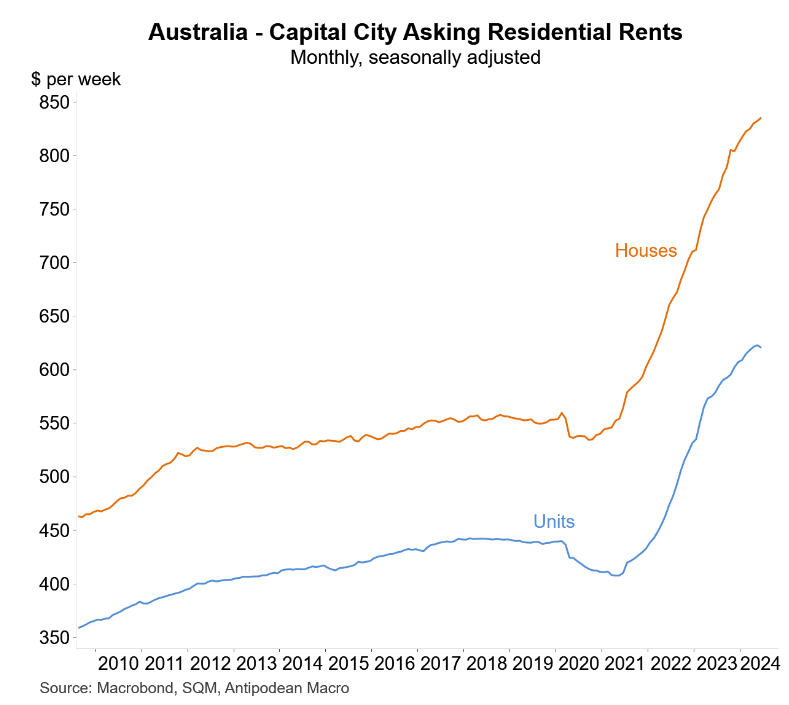
Australia currently has a structural housing shortage, which AMP conservatively estimates to be around 200,000 dwellings, as a result of the structural shift upward in immigration from the mid-2000s:
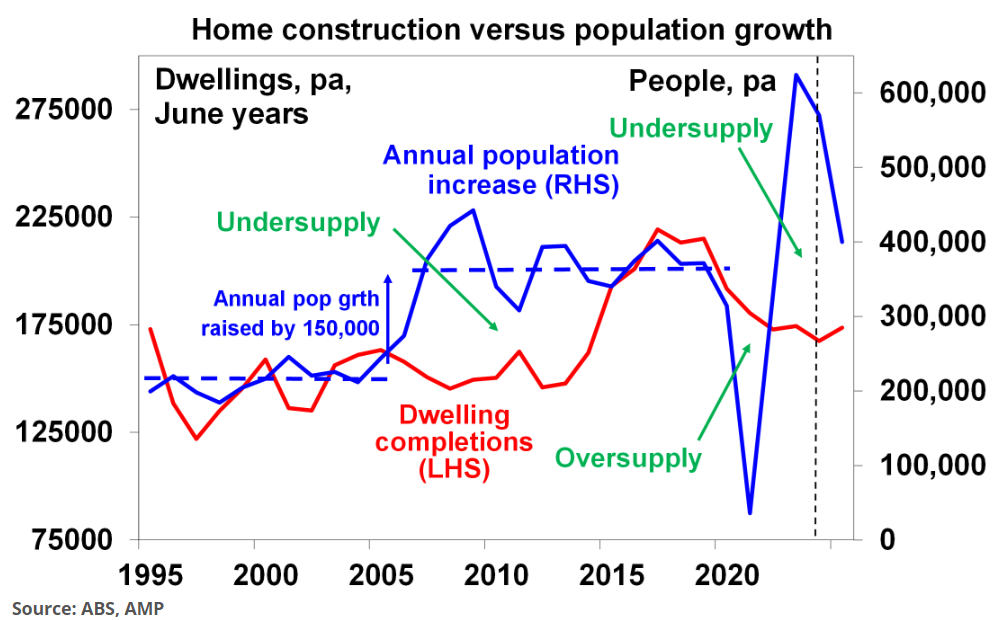
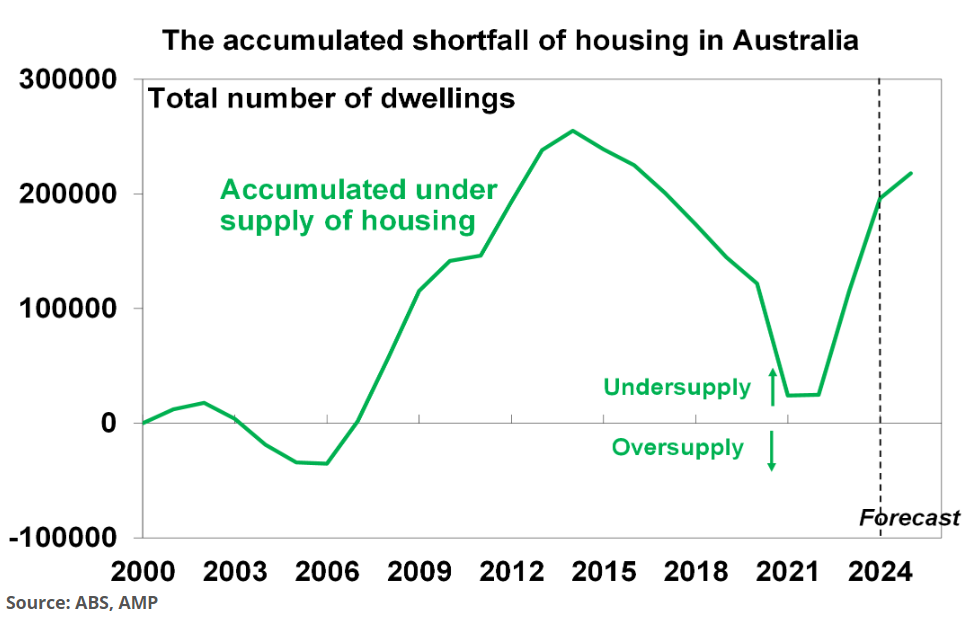
According to AMP, when net overseas migration collapsed during the pandemic, Australia’s housing shortage almost vanished. However, it worsened once the international border reopened and record volumes of migrants flooded in.
The housing situation is unlikely to improve over the long-term given that the 2023 Intergenerational Report projected that net overseas migration will run at 235,000 per year into eternity:
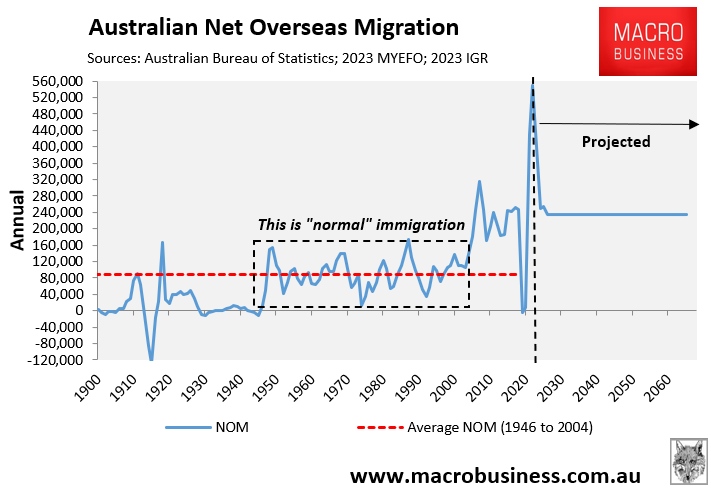
As a result, Australia’s population is projected to swell to 40.5 million in only 39 years—equivalent to adding a combined Sydney, Melbourne, and Brisbane to the current population of 27 million:
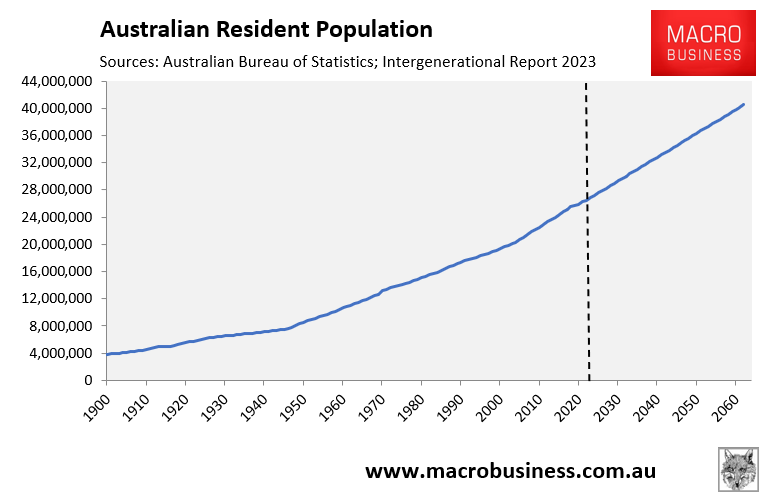
Such extreme population growth will require the construction of around 5.5 million homes (accounting for demolitions) and will guarantee that Australia’s housing shortage is permanent.
It will also transform our major cities into high-rise ghettos:
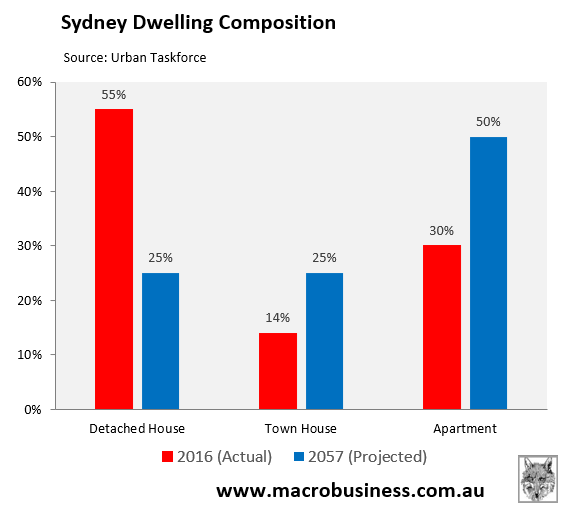
Forcing Australians to live in group housing is a band-aid solution to the housing shortage.
The real solution is to run a sensibly sized immigration program that is compatible with the supply side of the housing market.

